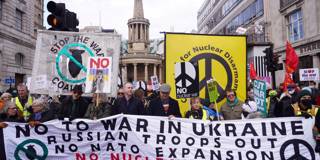OnPoint Subscriber Exclusive
The Big Picture brings together a range of PS commentaries to give readers a comprehensive understanding of topics in the news – and the deeper issues driving the news. The Big Question features concise contributor analysis and predictions on timely topics.

The Nuclear Nightmare in Ukraine
Besides causing widespread death, destruction, and displacement, Russia’s invasion of Ukraine has also increased the risk of a radiological disaster and even nuclear war. But it is far from clear whether political leaders fully recognize the dangers and have a credible strategy for mitigating them.
In this Big Picture, Columbia University’s Willem H. Buiter thinks financial markets remain in denial about the rising risk of a nuclear conflict, which seems likelier now than it has in decades. And Bennett Ramberg, writing before the Russian invasion, saw a major catastrophe involving one or more of Ukraine’s 15 nuclear power reactors as the biggest underappreciated risk of an eventual war.
Mohamed ElBaradei, Director General Emeritus of the International Atomic Energy Agency, explains why not only reactors but also warheads have returned to the center of geopolitics, and outlines how the world can resume the task of freeing itself of nuclear weapons. Similarly, El Hassan bin Talal of the Nuclear Threat Initiative and Sundeep Waslekar of Strategic Foresight Group call for a new global security architecture to tackle mounting nuclear and other existential threats.
But Yuriy Gorodnichenko of the University of California, Berkeley, and Torbjörn Becker of the Stockholm School of Economics take a harder line, and urge NATO to revive its Cold War deterrence doctrine of mutual assured destruction in response to Russian President Vladimir Putin’s threats.
Whatever the outcome in Ukraine, policymakers may have no choice but to create new institutions to manage global threats. As Harvard University’s Joseph S. Nye, Jr. notes, political and technological change will always introduce new issues, which means that the work of maintaining a “just deterrence” is never done.